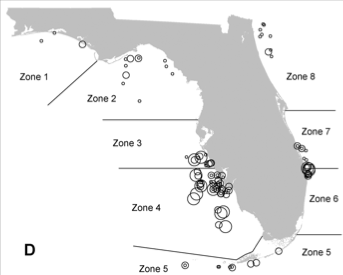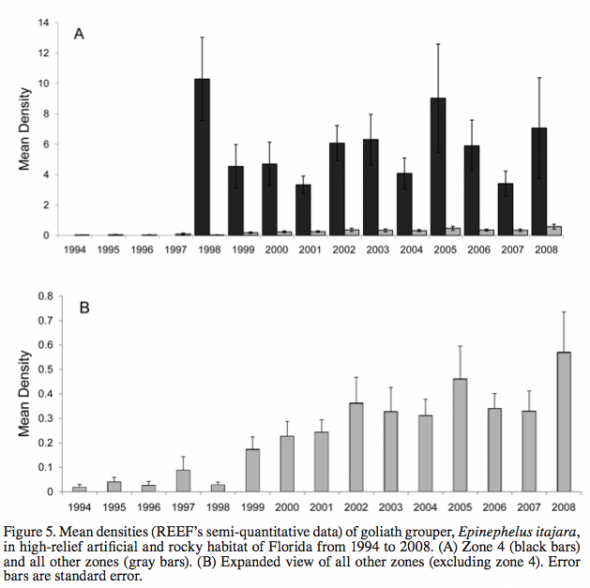Every day in marine conservation, you hear both. How about the bad news first.
The Guardian is reporting another shark masacure in the Malpelo sanctuary off Columbia (but note I have not heard independent confirmation about this and the Guardian botched part of the article by suggesting whale sharks had been harvested for their fins).
Like Scott Henderson says, a shark massacure happens every day, somewhere in the world, and eventually when all the sharks are gone, it won’t.
Sound extreme? Surely that is how some responded to warnings about the mastodon, the saber-toothed cat, Stellar’s sea cow, the Japanese sea lion, and my favorite the thylacine, an extinct carnivorous marcupial. All hunted to extinction.
Just after hearing about the latest shark heist (some people get links to cute kitten videos from their friends-I get them to gruesome shark fishing stories…), a friend sent me a link to an awesome paper documenting the extradinary recovery of goliath grouper in Florida (Koenig et al 2001, which you can read or download here).
I love goliath grouper! They are one of the reasons I went into marine biology. I still have very clear memories of seeing them under the docks and on the reefs of the Florida Keys in the mid to late 1970s, before they were virtually wiped out by spearfishing.
Well some good regulations and serious enforcement by the otherwise environmentally hapless state of Florida has led to one of the true jump-up-and-down success stories of marine fisheries management (as Ray Hilborn rightly argues, there are good news stories out there and they need to be acknowledged, celebrated and studied).
The vast majority of the goliath grouper population is restricted to Florida waters. We found that the population of goliath grouper, after dramatic fishery-induced declines in the 1970s and 1980s, and eventual fishery closure in the 1990s, increased off southwest Florida in the mid-1990s, directly offshore of the high-quality mangrove nursery of the Ten Thousand Islands. – from Koenig et al 2011
Koenig et al synthesized data from over 30,000 surveys to map goliath density across space and time. Most of the recovery has been off southwest Florida, where there is a concentration of mangrove forest that is the primary nursery habitat for goliaths and many other fishes. In the map below, the circles indicate recent goliath population density (the bigger the circle, the more fish were counted in the survey):
The graph below (from Koenig et al 2011) depicts the population recovery of goliath grouper in Florida. Note Zone 4 is the high density area off SW Florida – see the map above):
As encouraging as this is, the population has only recovered in a tiny fraction of its former range. I hope this report is not used as grounds to justify fishing this species again. The two lessons here are: (1) fisheries management (a complete ban in this case) can work and near-extinct populations can (begin to) recover, but (2) it is extremely easy to overfish – nearly to oblivion – a large, long-lived predator. Lets not let lesson 1 make us loose sight of lesson 2!
Koenig says he doubts goliath will ever recover enough to fully open the fish to commercial and recreational harvest. Without tight restrictions, he said, fishermen could bring the goliath population back down to 1990 levels in two months. “They’re too easy to catch,” Koenig said. The fish do not fear people and they spawn all at once in large groups, making them susceptible to swift overfishing. – from the AP


Leave a Reply